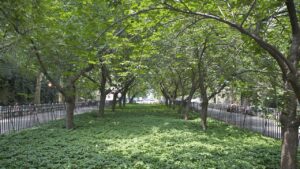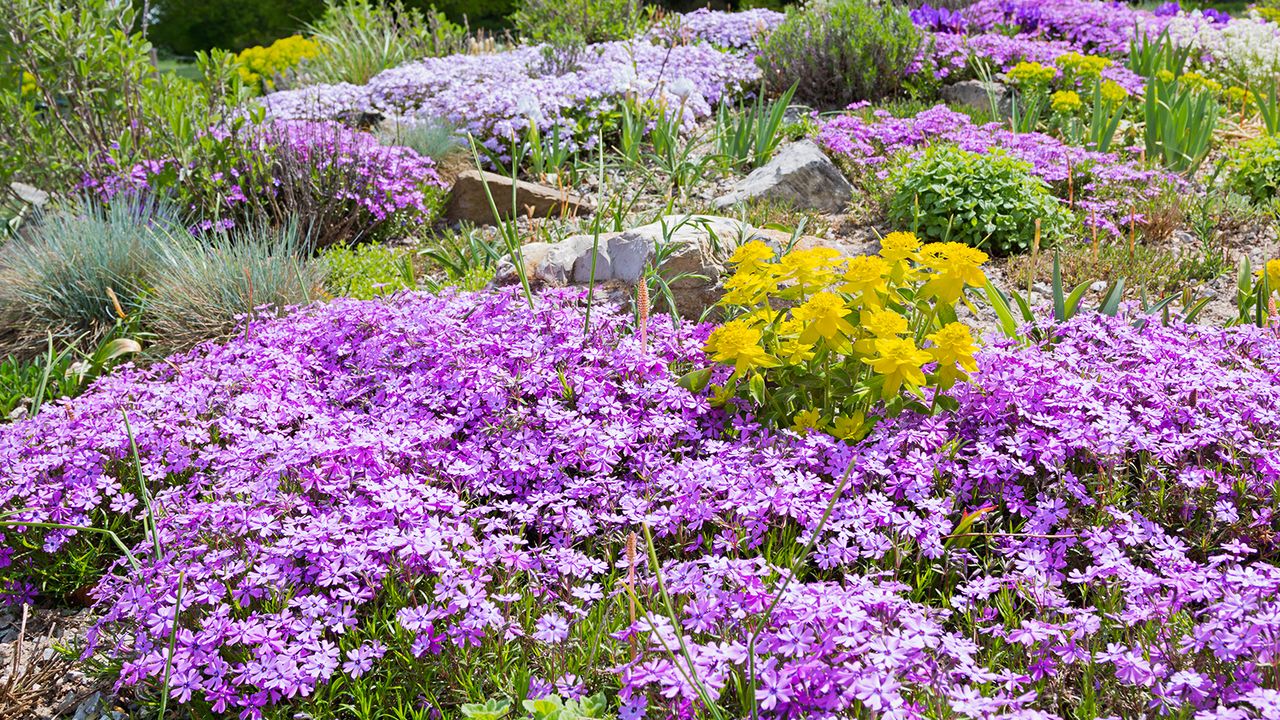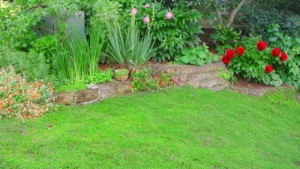Introduction
Gardening in shaded areas can be a challenge, especially when it comes to finding plants that thrive in low-light conditions. Ground covers are an excellent solution for these spaces, providing lush greenery, reducing soil erosion, and suppressing weeds. In this article, we’ll explore 16 low-growing ground covers that are perfect for shaded areas. These plants not only add beauty to your garden but also require minimal maintenance, making them ideal for both novice and experienced gardeners.
Why Choose Ground Covers for Shade?
Benefits of Ground Covers
- Erosion Control: Ground covers help stabilize soil, preventing erosion on slopes and shaded areas.
- Weed Suppression: Dense ground covers block sunlight, reducing the growth of weeds.
- Aesthetic Appeal: They add texture, color, and visual interest to shaded parts of your garden.
- Low Maintenance: Many ground covers require little care once established, making them a practical choice for busy gardeners.
Challenges of Shaded Areas
- Limited Sunlight: Plants in shaded areas receive less sunlight, which can affect their growth and flowering.
- Moisture Levels: Shaded areas often retain more moisture, which can lead to issues like root rot if not managed properly.
- Soil Quality: Shaded areas may have poorer soil quality due to less organic matter decomposition.
16 Low-Growing Ground Covers for Shade
1. Ajuga (Ajuga reptans)
- Height: 2-4 inches
- Spread: 12-18 inches
- Features: Ajuga, also known as bugleweed, is a fast-spreading ground cover with glossy, dark green leaves and spikes of blue, purple, or white flowers in spring.
- Care: Prefers moist, well-drained soil. Tolerates partial to full shade.
2. Pachysandra (Pachysandra terminalis)
- Height: 6-12 inches
- Spread: 12-18 inches
- Features: Pachysandra, or Japanese spurge, is a hardy ground cover with glossy, evergreen leaves and small white flowers in early spring.
- Care: Thrives in rich, well-drained soil. Ideal for deep shade.
3. Lamium (Lamium maculatum)
- Height: 6-8 inches
- Spread: 12-18 inches
- Features: Lamium, or spotted deadnettle, has silvery-green leaves and produces pink, purple, or white flowers in late spring.
- Care: Prefers moist, well-drained soil. Tolerates partial to full shade.
4. Hostas (Hosta spp.)
- Height: 6-36 inches (depending on variety)
- Spread: 12-48 inches
- Features: Hostas are known for their large, lush leaves and spikes of lavender or white flowers in summer.
- Care: Prefers rich, well-drained soil. Thrives in partial to full shade.
5. Sweet Woodruff (Galium odoratum)
- Height: 6-12 inches
- Spread: 12-18 inches
- Features: Sweet woodruff has whorls of bright green leaves and small white flowers in spring. It also has a sweet, hay-like fragrance.
- Care: Prefers moist, well-drained soil. Ideal for partial to full shade.
6. Creeping Thyme (Thymus serpyllum)
- Height: 2-3 inches
- Spread: 12-18 inches
- Features: Creeping thyme is a low-growing herb with tiny, aromatic leaves and small purple, pink, or white flowers in summer.
- Care: Prefers well-drained soil. Tolerates partial shade but thrives in full sun.
7. Vinca Minor (Vinca minor)
- Height: 4-6 inches
- Spread: 12-18 inches
- Features: Vinca minor, or periwinkle, has glossy, evergreen leaves and produces blue or purple flowers in spring.
- Care: Prefers moist, well-drained soil. Thrives in partial to full shade.
8. Foamflower (Tiarella cordifolia)
- Height: 6-12 inches
- Spread: 12-18 inches
- Features: Foamflower has heart-shaped leaves and produces spikes of white or pink flowers in spring.
- Care: Prefers moist, well-drained soil. Ideal for partial to full shade.
9. Bishop’s Hat (Epimedium spp.)
- Height: 8-12 inches
- Spread: 12-18 inches
- Features: Bishop’s hat, or barrenwort, has delicate, heart-shaped leaves and produces small, colorful flowers in spring.
- Care: Prefers well-drained soil. Thrives in partial to full shade.

10. Wild Ginger (Asarum canadense)
- Height: 6-8 inches
- Spread: 12-18 inches
- Features: Wild ginger has heart-shaped, dark green leaves and produces small, maroon flowers hidden beneath the foliage.
- Care: Prefers moist, well-drained soil. Ideal for partial to full shade.
11. Lily of the Valley (Convallaria majalis)
- Height: 6-12 inches
- Spread: 12-18 inches
- Features: Lily of the valley has arching, dark green leaves and produces fragrant, bell-shaped white flowers in spring.
- Care: Prefers moist, well-drained soil. Thrives in partial to full shade.
12. Coral Bells (Heuchera spp.)
- Height: 8-12 inches
- Spread: 12-18 inches
- Features: Coral bells have colorful, lobed leaves and produce spikes of small, bell-shaped flowers in summer.
- Care: Prefers well-drained soil. Ideal for partial shade.
13. Golden Creeping Jenny (Lysimachia nummularia ‘Aurea’)
- Height: 2-4 inches
- Spread: 12-18 inches
- Features: Golden creeping Jenny has bright yellow-green leaves and produces small yellow flowers in summer.
- Care: Prefers moist, well-drained soil. Tolerates partial shade.
14. Mazus (Mazus reptans)
- Height: 2-4 inches
- Spread: 12-18 inches
- Features: Mazus has small, green leaves and produces purple or white flowers in spring and summer.
- Care: Prefers moist, well-drained soil. Thrives in partial to full shade.
15. Allegheny Spurge (Pachysandra procumbens)
- Height: 6-12 inches
- Spread: 12-18 inches
- Features: Allegheny spurge has mottled, evergreen leaves and produces small white flowers in spring.
- Care: Prefers moist, well-drained soil. Ideal for partial to full shade.
16. Creeping Phlox (Phlox stolonifera)
- Height: 6-8 inches
- Spread: 12-18 inches
- Features: Creeping phlox has needle-like leaves and produces clusters of pink, purple, or white flowers in spring.
- Care: Prefers well-drained soil. Thrives in partial shade.
Tips for Growing Ground Covers in Shade
Soil Preparation
- Amend the Soil: Add organic matter like compost to improve soil structure and fertility.
- Ensure Good Drainage: Shaded areas can retain moisture, so ensure proper drainage to prevent root rot.
Planting and Spacing
- Follow Spacing Guidelines: Proper spacing allows plants to spread and fill in the area without overcrowding.
- Mulch: Apply a layer of mulch to retain moisture and suppress weeds.
Maintenance
- Watering: Keep the soil consistently moist, especially during the establishment period.
- Fertilizing: Apply a balanced fertilizer in spring to promote healthy growth.
- Pruning: Trim back overgrown plants to maintain their shape and encourage new growth.
Conclusion
Low-growing ground covers are an excellent choice for shaded areas, offering a combination of beauty, functionality, and low maintenance. Whether you’re looking to add texture, control erosion, or suppress weeds, the 16 ground covers listed in this article provide a variety of options to suit your needs. By selecting the right plants and following proper care guidelines, you can create a lush, vibrant garden that thrives even in the shadiest spots. So, embrace the challenge of shaded gardening and transform your garden into a serene and beautiful oasis with these versatile ground covers.


